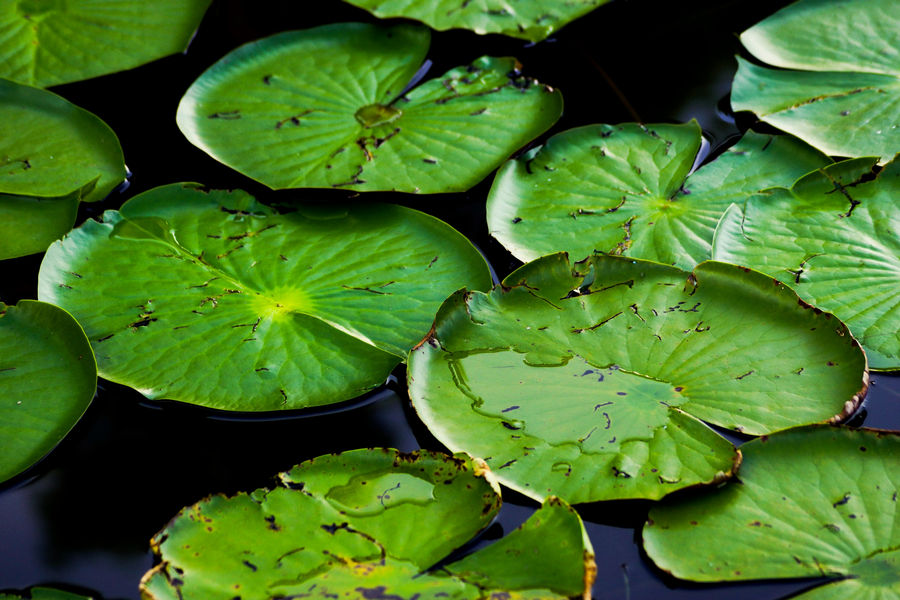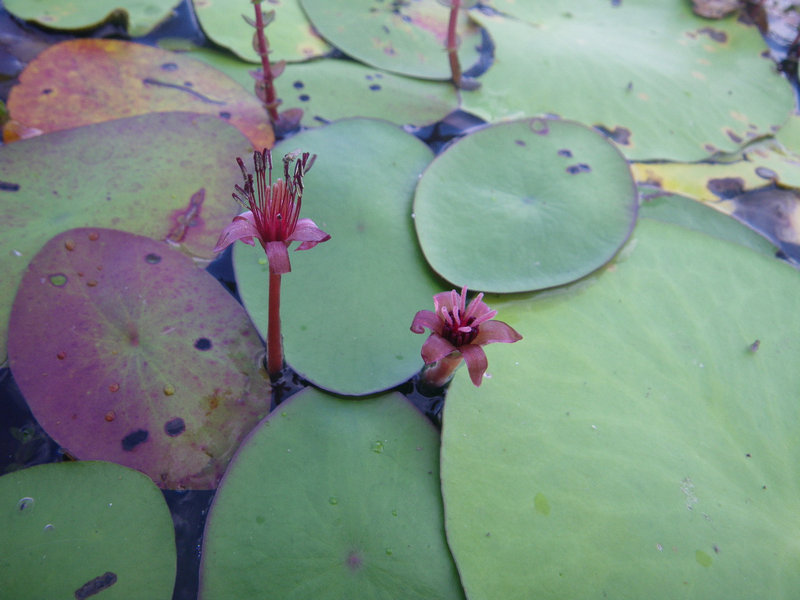Development and Application of DEP Bioassessment Methods
See our SOPS page to download SOPs and Forms identified below in bold italic type.
Biological assessment methods provide a direct measure of designated use attainment for most of Florida’s surface waters, where the goal is propagation and maintenance of a healthy, well-balanced aquatic community. Florida DEP has developed biomonitoring tools for streams, lakes and wetlands. The methods for streams (Stream Condition Index and BioRecon) and lakes (Lake Vegetation Index) have been comprehensively validated and calibrated using the process described below. While standardized sampling and interpretation methods for wetlands have been developed, they have not yet been fully calibrated. Efforts by DEP to develop marine bioassessment methods have not yielded practical bioassessment methods, and DEP relies on the "biological integrity" criterion (measured as a 25% reduction in Shannon diversity) as the bioassessment tool for marine waters.
Florida DEP has developed lake bioassessment protocols to monitor and assess the biological integrity of Florida lakes. Initial geographic regionalization resulted in the delineation of 47 lake regions within Florida (Griffith et al. 1996. Florida Lake Regions Report. US EPA, Corvallis, OR). Although an early Lake Condition Index (LCI) was developed by comparing reference lakes to non-reference lakes, subsequent efforts in 2007 to recalibrate the LCI using the Human Disturbance Gradient (HDG) concluded that the LCI was not well-correlated with adverse human effects because macroinvertebrate response was overwhelmed by natural factors (see Evaluation of Benthic Macroinvertebrates Assemblages as Indicators of Lake Condition).
Lake Vegetation Index
Because of the complications in assessing human disturbance in lakes using the invertebrate community, DEP developed methods involving the lake aquatic macrophyte community resulting in the Lake Vegetation Index (LVI), a multi-metric tool that assesses lake health based on the plant community structure. Four LVI metrics were chosen based on an HDG evaluation, and the LVI was subsequently calibrated via the BCG process. DEP currently uses the LVI as the primary method to assess biological health in Florida lakes. The LVI is sampled per DEP SOP LVI 1000 and calculated per DEP SOP LVI 2000. The LVI method involves dividing a lake into 12 units and identifying plants to the lowest possible taxonomic level in 4 of the 12 units. Plants are identified in each unit by a visual boat “drive by” and via a transect in each of the 4 units. A frotus is deployed a minimum of five times during the transect to assess the presence of submersed aquatic plants. All plants for a unit are recorded in a single column on the Lake Vegetation Index Field Sheet (FD 9000-27), and a dominant or co-dominant is assigned based on areal extent. Unknown plants are brought back for expert identification and verification. Florida is divided into two lake regions, north and south. For north Florida, the LVI sampling season is May through October, and the sampling season for south Florida is April through November. Data generated on the presence of species is used to calculate four biological metrics — each of which has been shown to respond to human disturbance. The metrics are:
- Percent Native Taxa
- Percent FLEPPC Category 1 Taxa
- Percent Sensitive Taxa
- Coefficient of Conservatism (C of C) of Dominant/Co-dominant Taxa
Additional LVI Resources
The following documents provide additional resources on the development and use of the LVI.
Assessing the Biological Condition of Florida Lakes: Development of the Lake Vegetation Index – Fore, L. et al., 2007. Describes LVI index development and calculation.
Sampling and Use of the Lake Vegetation Index (LVI) for Assessing Lake Plant Communities in Florida: A Primer – DEP 2011. Provides information on sampling process and decision making involved with LVI.
Development of Aquatic Life Use Support Attainment Thresholds for Florida’s SCI and LVI – DEP 2011. Describes factors necessary to consider when developing a quantitative measure of biological health with focus on establishing the biological thresholds for the SCI and LVI.
Florida DEP has concluded the initial development of biological monitoring tools for wetland ecosystems. A research team led by Dr. Mark Brown of the University of Florida's Center for Wetlands investigated attributes from multiple biological assemblages in wetlands for use in the development of biocriteria for these systems. The wetland biological assessment tools consists of vegetation transects, 20 dipnet sweeps for macroinvertebrates and a qualitative periphyton sample collection. The University of Florida research team developed a classification scheme for Florida’s wetland types and completed a wetlands regionalization map.
The Wetland Condition Index has three components: a Wetland Vegetative Index, a Wetland Macroinvertebrate Index and a Wetland Diatom Index. All three indices are strongly correlated with the Landscape Development Intensity index (LDI). Wetland indices were developed for isolated herbaceous wetlands, isolated forested wetlands, and forested strands and floodplain wetlands (documents available on Report Search). These wetland tools have not yet been calibrated with the BCG or other approach and have not been incorporated in DEP rules.
In 2011 and 2012, DEP collected biological and water quality data from estuaries around the state to support the development of numeric nutrient criteria and to explore and refine biological assessment methods in estuarine environments for eventual statewide use. Sampling stations were in areas with minimal human impacts to establish baseline expectations. Site selection was based on a combination of aerial photographs, local knowledge, and a site reconnaissance. The biological communities targeted were epibenthic invertebrates and juvenile fish.
These groups were selected for study because in addition to providing important information on an estuary’s key ecological functioning, the effort level needed to sample and identify these organisms is practical from a human resource perspective. DEP used multiple gear types (fyke nets, beach seines and beam trawls) in each estuary to determine which gear, or combination of gears, would yield the best information for the level of sampling effort.
The information collected was included in a series of comprehensive technical support documents for each estuary and provided important baseline information and expectations for healthy epifaunal and juvenile fish communities for nearshore communities throughout Florida.



